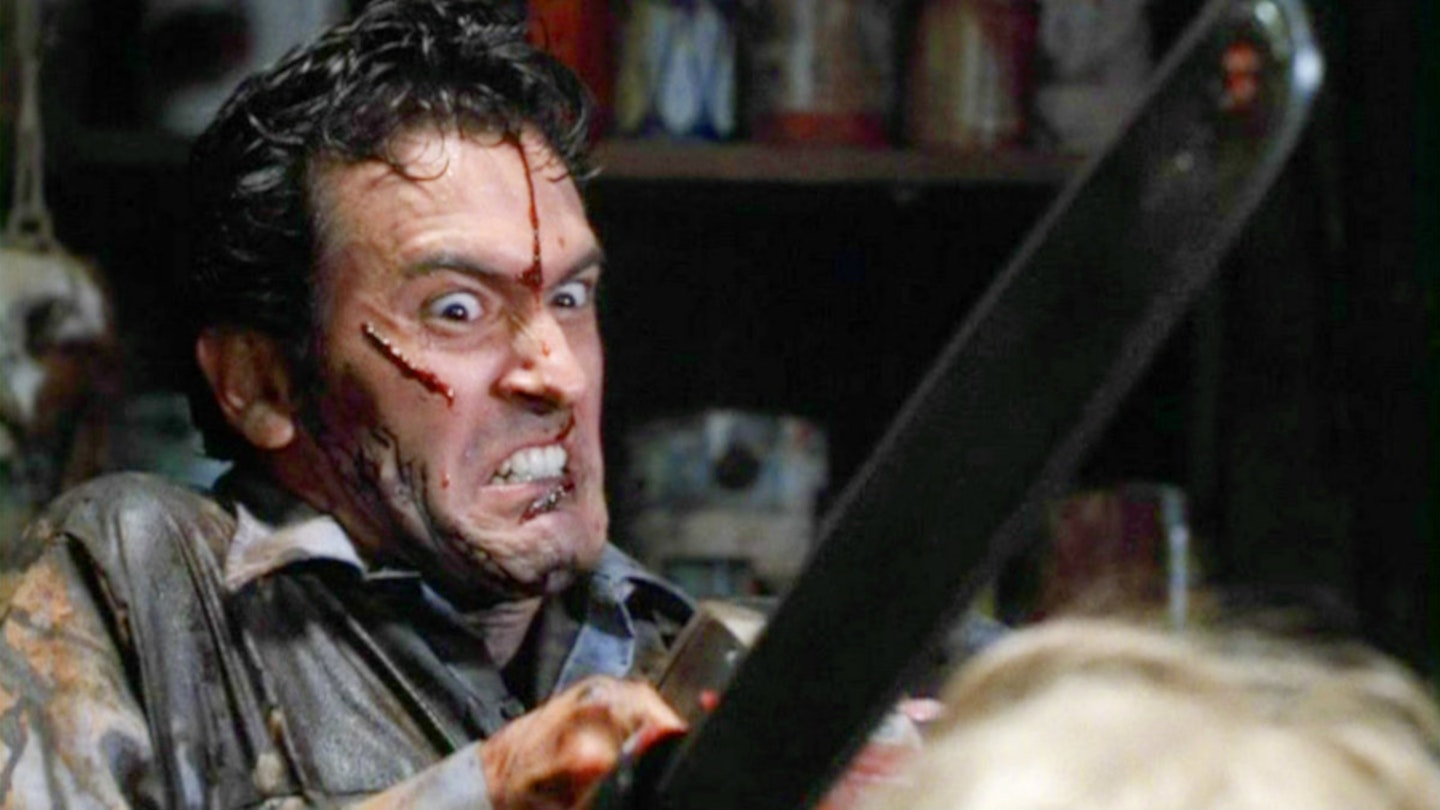It was remiss of the film geeks in Scream 2 to overlook Evil Dead II when discussing the paucity of superior sequels. Alright, it's more of a remake — or remix — than a Part Two, but it's fairly unique in improving upon the promise of the original, like the new model of a household appliance with a whole rack of extra functions and twice as many flashing lights. Like its hero Ash (Campbell), in fact, who, having lopped off his own infected hand, replaces it with a chainsaw ("Groovy!").
This film is a genuine case of more is more. Director Sam Raimi, producer Robert Tapert and star Bruce Campbell agreed to make a sequel to The Evil Dead, their own pioneering low budget gorefest of 1982 ("The Ultimate Experience In Gruelling Terror"). Raimi had just been approached by legendary Italian producer Dino De Laurentiis to helm a screen adaptation of Stephen King's Thinner — after all, King had raved about The Evil Dead: "It was like a thunderstorm in a bottle." Raimi eventually turned Thinner down, but after a more than influential nudge from King, De Laurentiis agreed instead to fund Evil Dead II.
Let us not underestimate the impact of the original Evil Dead (original title: Book Of The Dead). A simple tale of college kids in a cabin being taken over by demons, Raimi's full-length debut — after years of Super-8 shorts — was heavily influenced by The Texas Chain Saw Massacre (1974), Friday The 13th (1980), The Hills I Have Eyes (1977) and Night Of The Living Dead (1968), but managed through sheer guts and brio to find a place of its own in the horror pantheon achieving notoriety in Britain during the "video nasty" wars. (Having topped the UK video rental charts in 1983, it was briefly banned in 1984 under the Obscene Publications Act.) Raimi, only 22 when he made the film, seemed destined for greater things.
But it hasn't quite happened yet. Highlights of his "grown up" career include Spiderman and Spiderman 2, the stylised western The Quick And The Dead (1995) and the undeserved flop A Simple Plan (1998); the lowlight is Kevin Costner's baseball turkey For Love Of The Game (2000). Like the iconic Campbell, Raimi seems destined to go to his grave as "the Evil Dead bloke". Why? Simple. Because Evil Dead II made the huge mistake of being one of the greatest horror movies of its age, and not just because it contains a scene where an eye pops out of its socket and lands in someone else's mouth. Although that does help.
The original was shot on 16mm and cost around $400,000. The sequel had a budget of $3.6 million, and this was both its blessing and its curse. The budget gave Raimi, Tapert and Campbell (the three partners in Renaissance Pictures) the chance to re-do Evil Dead with knock-out gore effects, more stop-frame animation, bigger monsters, moving trees and wackier camerawork (including an astonishing "ride" through the woods in which Campbell is strapped to an unseen revolving crucifix!). And yet the budget prevented them making the ambitious, medieval sequel Raimi had envisaged — his 14th century vision is reduced to one scene at the end.
So it was that Evil Dead II was confined to the haunted cabin of the original. It even begins with a speeded-up recap of Evil Dead which should have been existing footage but had to be re-shot because it was too complicated to relicense the first film from the 50 different territories it had been
sold to. Thus, Evil Dead II begins with Evil Dead in precis, effectively rendering the first film obsolete (although, of course, academic purists still cling to it as a superior work). Raimi describes the recap as "shorthand": in it only Ash and Linda discover the fateful Book Of The Dead in the cabin; in the original, there were five of them (as anyone who saw the film knows). This entire sequence makes Evil Dead II unique, especially for a Part Two, and though Campbell himself admitted that he is "not interested" in this preamble, it acts as a great entree for first-timers.
Once the sequel has "kicked in" (Campbell's words), at the point where dead Linda rises from the grave and does a macabre dance, it's a true rollercoaster — the same conceits are recycled, but in such style you never feel shortchanged.
